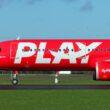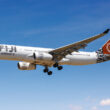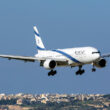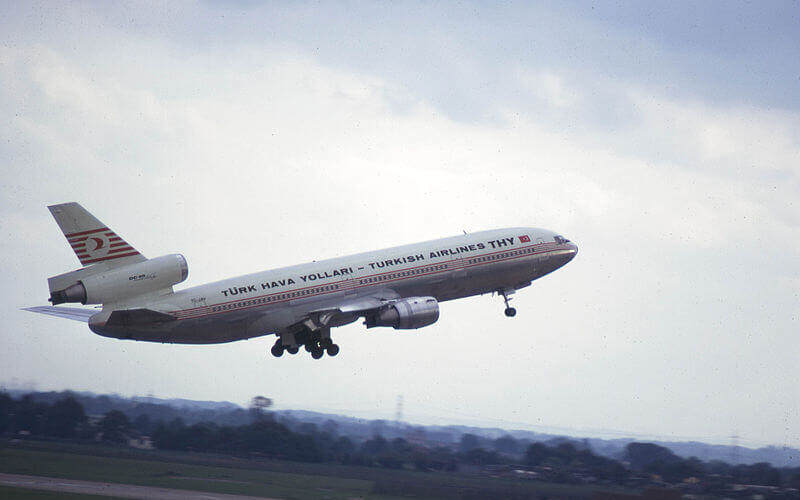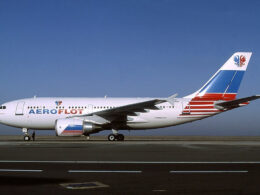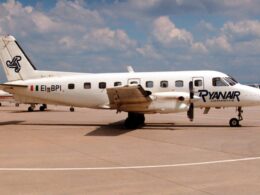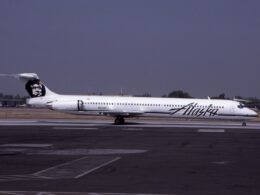On March 3, 1974, a Turkish Airlines McDonnell Douglas DC-10, which operated Flight 981 between Istanbul and London, crashed in the Ermenonville forest, killing all of its 346 occupants. To this day, this is the deadliest incident on French soil and the fourth deadliest accident in the history of civil aviation.
The Turkish Airlines DC-10 registered TC-JAV landed in Paris-Orly Airport (ORY), successfully completing the first leg of Flight TK981 towards London-Heathrow Airport (LHR). There, 216 passengers joined the 117 that were already on board, along with a crew of 11 members. The plane was refueled, additional luggage was loaded, and the plane took off once more to finish the journey.
But nine minutes into its flight, the cargo door situated on the left-hand side burst open, causing a violent decompression. Two rows of three passengers were immediately ejected from the plane: they would be found 15 kilometers away from the point of impact, in the village of Saint Pathus.
The depressurization damaged the cables of the tail control surfaces that were running beneath the collapsed floor. The aircraft banked left and entered an uncontrollable descent. It hit the ground at almost 700 km/h (434 mph). Of the 346 occupants, none survived.
A crash that could have been avoided?
Less than a year after the DC-10 made its debut flight with American Airlines (A1G) (AAL) , a first incident involving the cargo door of the aircraft was reported. On June 12, 1972, shortly after take-off from Detroit‘s Airport, the cargo door of American Airlines Flight 96 blew open.
The situation could have been as tragic as Ermenonville. Fortunately, no one was sitting where the floor collapsed, and the captain Bryce McCormick had trained for this type of incident in a flight simulator of the airline. He regained control of the aircraft and successfully landed back in Detroit.
The NTSB found out that the cargo door had been improperly secured by ground technicians due to a fault in the design: in certain situations, the door looked closed and locked, but the hooks and the safety pins were not completely engaged. In the cockpit, the indicator in the cockpit would also register the cargo door as closed. Thus, the NTSB recommended a change in the design of the locking mechanism, as well as the installation of relief vents to allow for the equalization of the pressure difference between the cabin and the cargo hold.
Yet no airworthiness directive was published by the Federal Aviation Administration (FAA). At the time, McDonnell Douglas was competing with Lockheed Martin’s L-1011 TriStar which was selling well. Any problem going public would have put the manufacturer at risk of losing more ground. Thus, the cargo door was hastily redesigned, but the main problems remained.
The investigation into Turkish Airlines Flight 981 by the French BEA found out that not only was the cargo door incorrectly fastened, but the relief vents that had been installed were too small to properly ensure pressure balance during the event of a violent depressurization.
The FAA issued an airworthiness directive, and the cargo doors and pressure vents were modified on all DC-10s in service. McDonnell Douglas eventually lost a lawsuit worth over $18 million to the victims’ families. While the aircraft type continued to fly for a few more years uneventfully, that tragic crash would be the first nail in the coffin of the DC-10.

